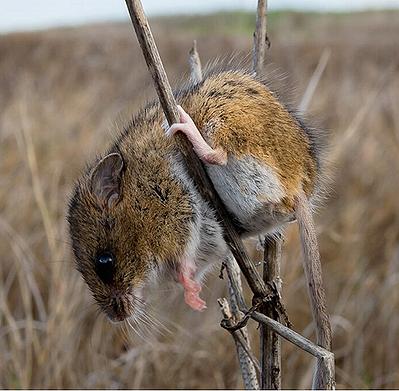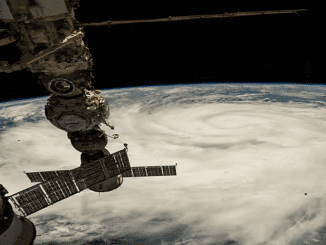
WASHINGTON, DC, July 21, 2023 (ENS) – As the United States marks the 50th anniversary of the Endangered Species Act, the U.S. Fish and Wildlife Service and NOAA’s National Marine Fisheries Service are proposing to restore protections for species, strengthen consultation and listing processes, and reaffirm the central role science plays in decisions that guide the protection and recovery of endangered and threatened wildlife.
The plan includes a set of proposed actions that follow President Joe Biden’s Executive Order 13990, Protecting Public Health and the Environment and Restoring Science To Tackle the Climate Crisis, and will ensure the Endangered Species Act effectively addresses 21st century conservation challenges, such as climate change.
“The Endangered Species Act is the nation’s foremost conservation law that prevents the extinction of species and supports their recovery,” said Fish and Wildlife Service Director Martha Williams. “These proposed revisions reaffirm our commitment to conserving America’s wildlife and ensuring the Endangered Species Act works for both species and people.”

“Through the Endangered Species Act, we take a science-based approach to protect threatened and endangered species and their habitats,” said NOAA Fisheries Assistant Administrator Janet Coit. “These proposed regulatory updates will help ensure the Act continues to serve as an effective conservation tool in the face of continued challenges, including biodiversity loss and climate change.”
Two separate proposed rules address the responsibilities that the Fish and Wildlife Service and NOAA Fisheries share regarding interagency cooperation, species classification, and critical habitat designations under the Endangered Species Act.
The agencies are jointly proposing three rule changes. They intend to improve both agencies’ ability to fulfill their responsibilities under the Endangered Species Act to protect and recover listed species.
The two joint rules include:
- – Improving the interagency consultation process. Revising language, definitions, and responsibilities that would clarify and improve the federal interagency consultation processes.
- – Revising the scope of reasonable and prudent measures in an incidental take statement to improve conservation outcomes.
- – Clarifying standards for listing, delisting, and reclassifying species, and revising some criteria for critical habitat designations.
- – Reinstating prior language reflecting congressional intent that listing, reclassification, and delisting determinations must be made “without reference to possible economic or other impacts of such determination,” along with other changes to improve the transparency of the listing process.
- – Revising some of the criteria for designating critical habitat.
A third rule, addressing protections for threatened species, is proposed by the Service to reinstate protections for species listed as threatened under the Endangered Species Act. Reinstating the blanket 4(d) rule will provide a basic level of protection for all species listed as threatened while retaining the option for the Service to adopt a species-specific 4(d) rule.
What’s Wrong With These Revisions?
“While areas of concern exist within these new regulations, restoring automatic protections for our nation’s threatened species is a huge step in the right direction for the Endangered Species Act and biodiversity,” Jamie Rappaport Clark, president CEO of Defenders of Wildlife, said.

A former director of the U.S. Fish & wildlife Service from 1997 through 2001 under President Bill Clinton, Clark said, “As humans, we are inextricably linked with the ecosystems around us. Saving nature and establishing scientifically-sound ways to coexist with wildlife must be a national priority. Our future depends on it.”
“Removal of economic considerations that had infected the scientific-based process for determining whether a species was afforded protections against extinction is a welcome proposal,” Clark said.
But she warned that some of the Trump changes are still in place. “At the same time, the proposal still retains several of the 2019 regulatory changes that undermine protections for imperiled wildlife and weaken the Endangered Species Act,” Clark said.
The nonprofit Center for Biological Diversity also warns that the government is “keeping in place some of the most significant rollbacks to the Endangered Species Act” in the law’s history.
“This disappointing proposal fails to protect our nation’s endangered plants and animals. It restores pieces of the Endangered Species Act but keeps many of the disastrous Trump-era provisions in place,” said Stephanie Kurose, senior endangered species policy specialist at the Center for Biological Diversity.
“If federal officials truly wanted to stem the extinction crisis, they’d restore the full power of the Act and overhaul the U.S. Fish and Wildlife Service. As we celebrate the 50th anniversary of the Endangered Species Act, we need bold, transformative action, not more policy half measures,” Kurose said.
Today’s proposal removes barriers to designate critical habitat for climate-impacted species and to designate unoccupied areas as critical habitat.
The proposal, however, retains a definition of adverse modification that requires federal actions to affect species’ critical habitat “as a whole” before real habitat protections are put in place.
Kurose says, “This is especially harmful for species like the northern spotted owl, polar bear or gulf sturgeon that have large critical habitat designations but are still at risk of extinction. For example, the Forest Service wouldn’t be required to mitigate harm caused by clearcutting old-growth trees in spotted owl habitat unless the logging project affected the owls’ entire nine million-acre critical habitat.”

“The administration’s proposal does nothing to address the fact that endangered species are dying a death by a thousand cuts,” said Kurose. “This is a major omission that shortchanges not only species like the spotted owl, but also the ecosystems they and all of us depend on for our survival. There’s just no way to ensure the survival and recovery of plants and animals without protecting the places they live.”
Kurose points out that the proposal lets federal agencies off the hook for past harms to endangered species from things like dam or highway construction by deeming these projects part of the “environmental baseline.”
The proposal also absolves the agencies for much of the damage caused by interrelated actions they facilitate, such as urban growth from highway expansion or increased global warming from emissions related to federal oil and gas leasing.
Last year, the Center for Biological Diversity filed a legal petition urging the wildlife agencies to undo the Trump-era rollbacks to the Act and pushing for ambitious new regulatory safeguards that strengthen all aspects of the law. Today’s proposal offers no new protections for endangered and threatened species.
Agencies Renew Promises of “Best Available Science”
Both federal agencies say they are committed to applying the best available science when implementing the Endangered Species Act, including when making listing and delisting decisions, designating critical habitat, developing protective regulations for threatened species, and consulting on federal actions.

“The Endangered Species Act has been overwhelmingly successful in preventing the extinction of over 99% of the species it has protected over its 50-year history,” the two agencies said in their statement announcing the new approach.
Throughout the year, the Departments of the Interior and Commerce will celebrate these successes and highlight the continued importance of this statute in addressing today’s environmental challenges, promoting the recovery of wild plants and animals, and conserving the habitats upon which they depend.
The proposed rules will be subject to public review and comment, and all comments will be considered before a final rule is published, the agencies say.
The agencies encourage any interested parties to provide input and comments on each of the three separate proposed rules during the 60-day public comment period from June 22, 2023 to August 21, 2023.
The notice will be available in the Federal Register on June 22, 2023. The proposed rules will be placed on public inspection on June 21, 2023 at https://www.federalregister.gov/public-inspection/current.
Featured image: Two gray wolves are protected in Wolf Park, Battleground, Indiana, March 30, 2021 (Photo by Raed Mansour)



